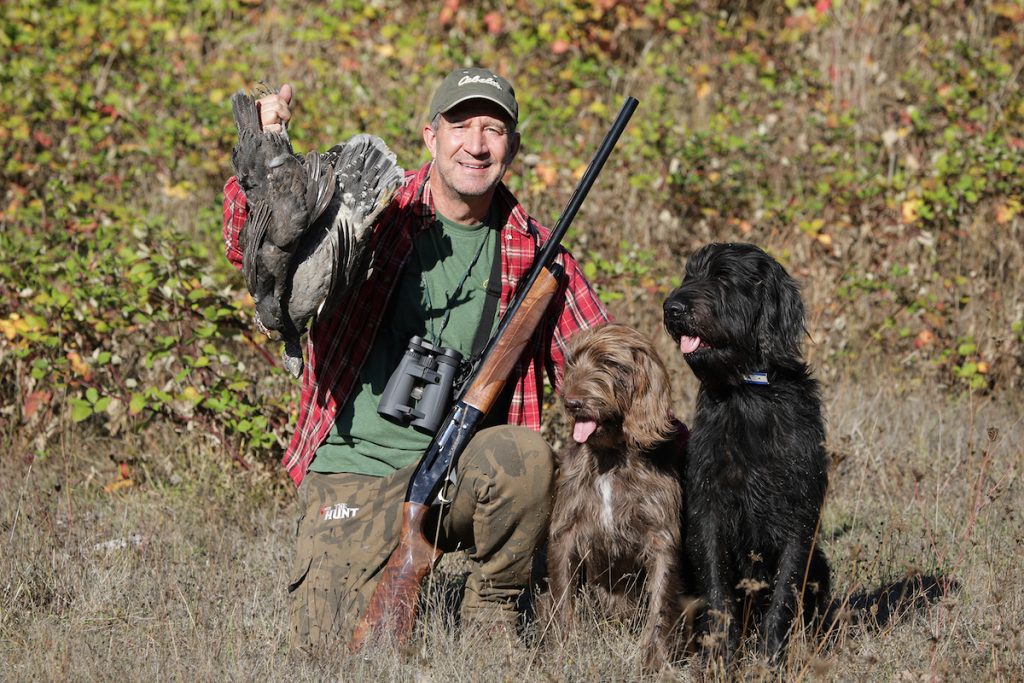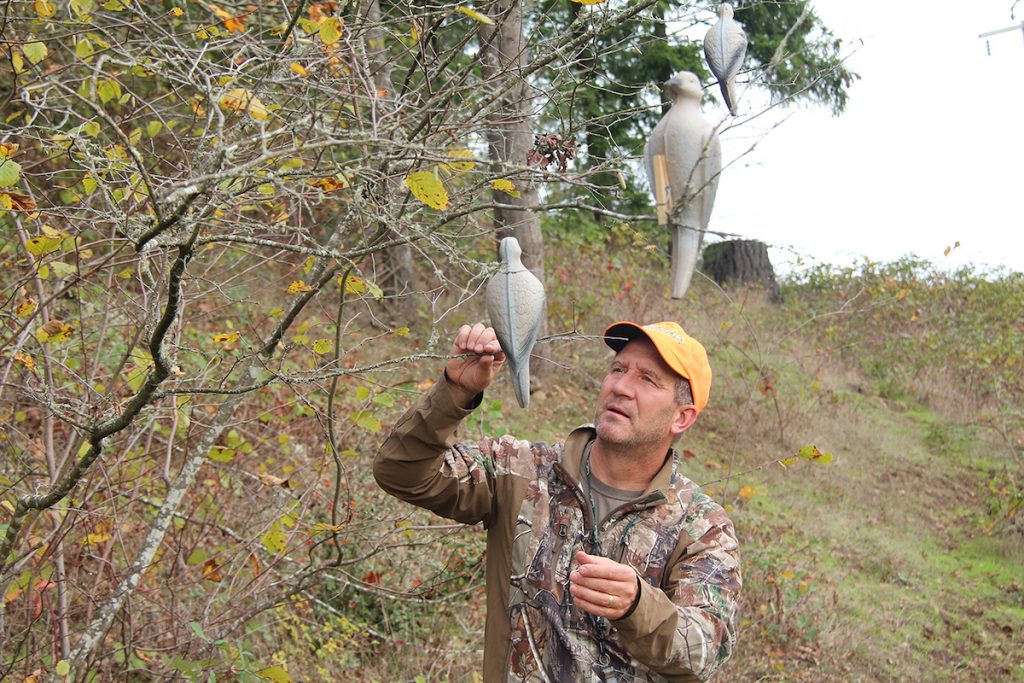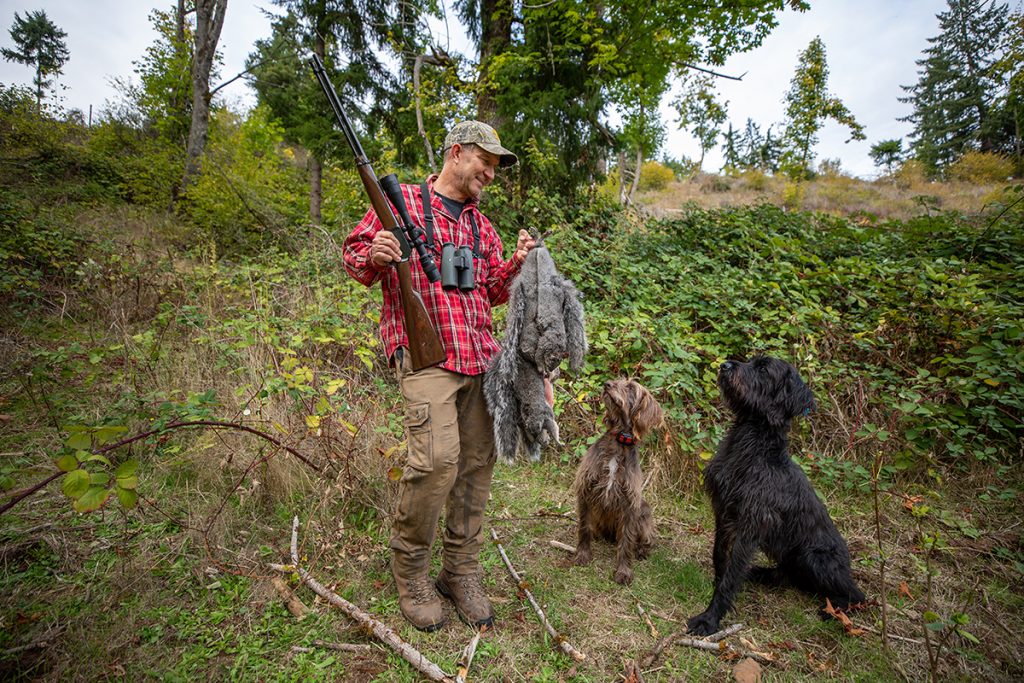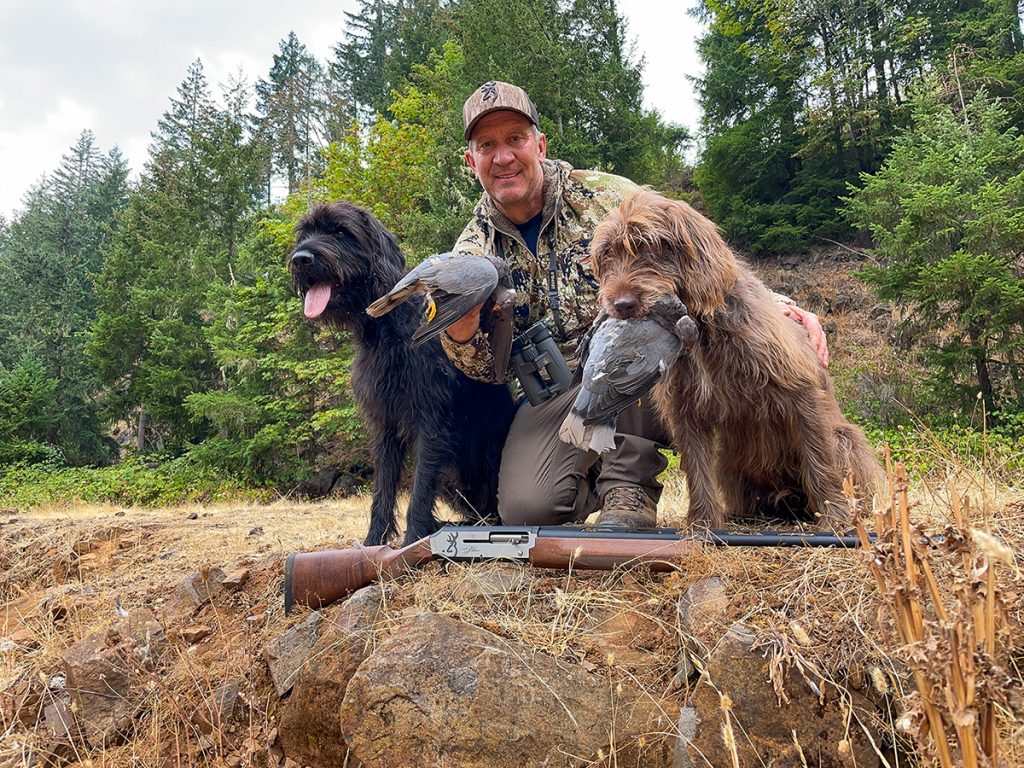Forget elk! Head to the Pacific Northwest for a September upland bird fest unlike any other. From ruffed grouse to doves to pigeons to turkey and more, this little geographic slice of heaven is an upland bird hunter’s dream come true.
by Scott Haugen
The September 1st upland bird opener started with a bang, literally. It began with a point, then a bang. Kona, one of my pudelpointers, went on solid point in thick brush paralleling a creek. As I neared Kona, a single ruffed grouse flushed, and my Browning Silver 20 gauge found the mark.
Legal shooting light had just arrived, and to start the day with a prized ruff excited me. With a ruffed grouse in hand, I knew my chance of securing a single-day upland slam was good.
On To Higher Ground
That’s when I headed to higher elevations for mountain quail and blue grouse. The ruffed grouse came low, about 750 feet in elevation. I wanted to hit the 2,500-foot elevation mark and higher to locate the blue bombers.
Glassing the fringes of a clearcut, I soon found a big covey of mountain quail. Kona and Echo, my female pudelpointer, and I headed across the ridge and approached the covey from above so the dogs could catch the scent of the birds in the rising thermals.
Before Kona and Echo detected the quail, the covey spotted me and sprinted into thick salal in a mountain quail-like fashion. Salal is a large-leafed, dense shrub that thrives in the Pacific Northwest, and once inside it, quail usually sit tight.
Soon, the dogs had the scent, and both locked on point where I’d seen the covey vanish. As I approached, wading through the noisy brush, I was surprised the covey didn’t flush. Neither dog budged, Kona with his nose pointing straight down, an inch from cover, Echo pointing at her front paw.
My first walk through the ground cover didn’t produce a bird. My dogs wouldn’t budge, so I walked it again, kicking the stiff, greasy-leaved shrubs as I went. That did it. The first mountain quail flushed mere inches from Kona’s nose. I missed that bird twice. More quail flushed, and I hit one, which Kona dove into the brush for.
I quickly reloaded and kept walking, dumping two more quail as they flushed. Echo retrieved both of those after some impressive work in dense cover. Mountain quail flushes are often sporadic. The entire covey will rarely flush in one big bunch.

From Grouse To Quail To Grouse
Mountain quail are making a noticeable comeback where I hunt them, and I was happy with three birds, choosing not to keep pursuing the covey. Mountain quail have a unique brooding trait. The adults build two nests, and the female lays eggs in each nest. The female and male each sit on a nest, hatching two clutches. Once hatched, the two broods come together, which explains why early-season coveys can number upwards of 20 birds. I only take a few birds from most coveys, hoping the others survive to perpetuate.
Covering the high ground on logging roads, we walked gated, walk-in-only accessible logging roads. These roads are closed to all motorized traffic and are often overgrown with a foot or two of tall, dry grass in early fall. These habitats hold a lot of food in the form of insects — especially grasshoppers in the fall — and clover and grit that blue grouse require.
The hatch was good; soon, the dogs and I had our blue grouse. We saw 11 blues that morning. Ninety percent of all blue grouse I’ve taken in my life have come within 200 yards — most within 100 yards — of 40-year-old Douglas fir forests.

That’s A Grand Slam
What remained on the daily menu was valley quail, the easiest of the four upland species to pursue. We got into a covey of these little quail in a creek bottom at lower elevations, and just like that, we enjoyed an upland slam for dinner that night.
Upland Questions
The number one question I receive from fellow outdoor enthusiasts is, “How do you make a full-time living as an outdoor writer?” The answer is lengthy, but the starting point always concerns location. Where I live in western Oregon, in the foothills of the Cascade Range, on the fringe of the Willamette Valley, there’s something for me to hunt or fish for year-round. And never are there more upland hunting opportunities than in early fall.
The day after the upland slam, the dogs and I were hunting mourning doves. Mourning dove season opens with upland bird season on September 1. Doves are hunted in worked-up grain fields and on water, where they gather grit and quench thirst. They can also be hunted near roosts, catching them early in the morning when they leave and late in the day when they return.

Fall Turkeys
Fall turkey season also opens on September 1. This is one of Kona and Echo’s favorite hunts, thanks to the amount of scent a flock of fall turkeys leaves on the ground. The dogs love mindlessly tracking and pointing turkeys. Turkeys hold tight when caught up in cover thick enough to conceal them.
I also use my dogs to break up a flock of turkeys. After breaking up a flock, I then close the distance to call them in. My best results with this approach have come by spotting a flock of turkeys 100 to 200 yards away feeding uphill into cover. Once the dogs see them, I send them on a full-out sprint to break up the flock. I only use one dog on these hunts, as the hunt gets exciting once the turkeys are dispersed.

I call the dog back once the flock has taken to the trees. We then hike out of sight. Now, I get as close as possible without being seen and hunker down in the brush. Usually, there are enough ferns or tall grass to lay the dogs in so they can’t be seen. I start calling after 15 minutes or when I hear the turkeys making assembly calls from the trees.
Assembly yelps and kee kees are my sounds of choice. Soon, birds come marching in, looking to rejoin the giant flock. The dogs love this intensity, as multiple turkeys often approach simultaneously. It’s a great test of a dog’s restraint and obedience.
Fall turkeys can also be patterned and hunted from a ground blind set along their known travel route. Many turkey hunters find success using decoys and calling in the fall.
Pigeons
In mid-September, a brief band-tailed pigeon season opens. As with the forest grouse and quail, pigeons thrive in the Cascade Mountains and Coast Range of Oregon and Washington state. Popular pidgeon haunts include water sources amid groves of cascara trees and elderberries and along travel routes connecting roosting, feeding and watering sources.
This is one of my dog’s favorite hunts, as we have an open knob in the Cascades that I’ve been hunting for years. From here, it’s easy to see approaching flocks of bandtails from over a mile away and track them to the shot. We’ve enjoyed hunting pigeons in the mountains many days, and connecting on a mix of grouse and quail adds to the day’s awesomeness. It’s too bad the pigeon daily bag limit is only two birds, as I’m seeing more birds than when I hunted them as a kid when the limit was seven.
A Change Of Pace
In addition to upland birds, Western gray squirrel season opens near my home on September 1. My dogs thrive on treeing and retrieving these squirrels. They often spot them on the forest floor before I do, and when they kick into squirrel mode, there’s no holding them back. As with all the upland birds, gray squirrels are excellent eating.

September is one of my busiest hunting months of the year. With plenty of public land hunting opportunities in the Pacific Northwest, experiencing what this special place is all about comes down to simply getting there.





